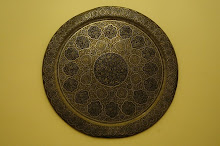 For millenia, humans settled the land between the two rivers, the Euphrates and the Tigris, to grow their crops, raise their families, and build great cities. Indeed, the earliest human civilization came about there because of these grand rivers.
For millenia, humans settled the land between the two rivers, the Euphrates and the Tigris, to grow their crops, raise their families, and build great cities. Indeed, the earliest human civilization came about there because of these grand rivers.Today, due to a number of factors - mostly human - that water flow is in danger and the green Mesopotamian plain is threatened with becoming a desert. The European Water Association warns that the waters of these rivers could disappear by 2040. The amount of water in the Euphrates has already fallen by 75% over the past decade.
The waters of the Tigris and Euphrates originate in Turkey, and, to a lesser extent, Syria. Damming and increased water storage upstream are diminishing the water flow into Iraq. Other factors including drought due to climate change, population growth in Iraq, the absence of economic water pricing and a lack of erosion control in Iraq, are heavily exacerbating the situation.
 The result is desertification, a reduction of land for grazing, and more severe sandstorms in Iraq as the earth is loosened, gathered up by the winds, and scattered.
The result is desertification, a reduction of land for grazing, and more severe sandstorms in Iraq as the earth is loosened, gathered up by the winds, and scattered. Steps are being taken by the Iraqi government to address the matter. However, like many challenges in the Middle East and elsewhere, moving rapidly and with great efficacy is imperative if one of the cradles of civilization is not to exhaust itself.
A recent article in the New York Times describes this critical situation in more detail.

















